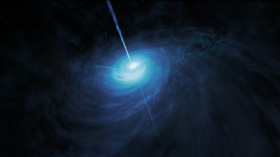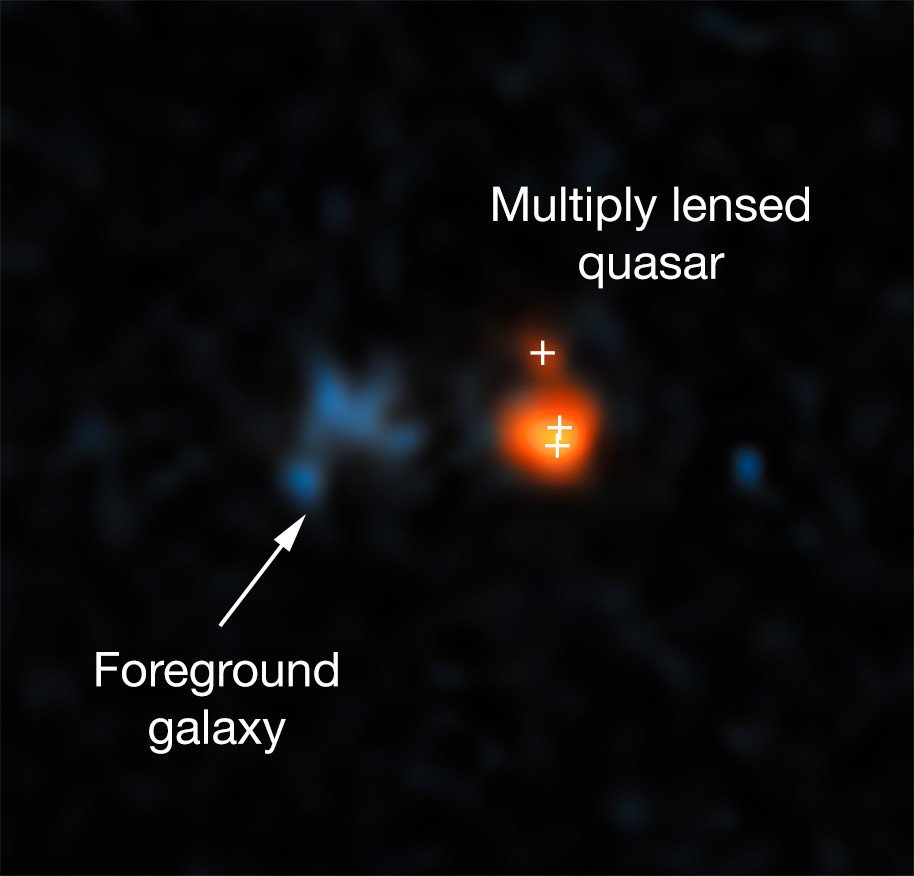Shining like 600 trillions suns: Hubble spots stunning star-producing quasar

After a 20 year search, the Hubble Telescope has found the brightest quasar ever seen in the early universe, which is brighter than 600-trillion suns and creates 10,000 stars each year.
What’s a Quasar?
Quasars are massive celestial objects which emit huge amounts of energy. They are the bright nuclei of active galaxies and have a star-like appearance when seen through a telescope.
Also on rt.com Hubble captures awe-inspiring PHOTO of Triangulum galaxy that spans 19,400 light-yearsThe quasar, named J043947.08+163415.7, is so old that the light received from it started its journey when the universe was only 1 billion years old – that’s some 12 billion years ago.
The quasar is powered by a huge black hole, which is estimated to be several hundred million times bigger than our sun, astronomers will detail in an upcoming paper in Astrophysical Journal Letters. The team estimate the quasar may be producing up to 10,000 stars per year, making the Milky Way’s mere single star per year look pretty meager in comparison.
“That’s something we have been looking for for a long time,”said lead author Xiaohui Fan of the new quasar discovery. “We don’t expect to find many quasars brighter than that in the whole observable Universe!”
Although its brightness is impressive, it was only thanks to gravitational lensing (caused by a dim galaxy between it and Earth), which bent the light and made it appear 50 times as bright, that scientists could see it.

“Its properties and its distance make it a prime candidate to investigate the evolution of distant quasars and the role supermassive black holes in their centres had on star formation,” co-author Fabian Walter said.
Scientists will conduct further research on the mysterious, dazzling quasar to gain further understanding about its gravitational role on surrounding galaxies, and to learn more about the composition and temperature of intergalactic gas in the early universe.
Like this story? Share it with a friend!














